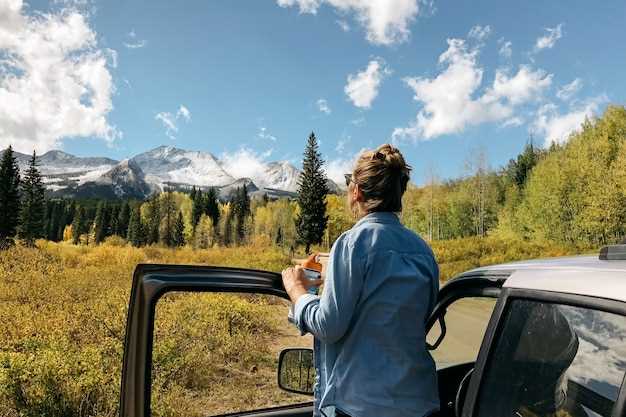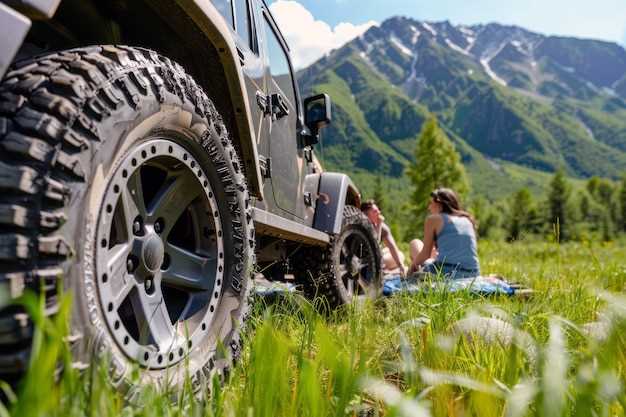How to Stay Safe While Off-Roading in Remote Areas


Embarking on an off-road trip in remote areas can be an exhilarating experience, offering a unique opportunity to connect with nature and explore untamed landscapes. However, while the thrill of adventure beckons, safety should always remain a top priority. Understanding the potential hazards and being well-prepared can significantly enhance your experience and ensure a safe journey.
Before you head off into the wilderness, it’s essential to plan your trip meticulously. This includes researching the terrain, weather conditions, and local wildlife. Knowledge of these factors enables you to gauge the risks involved and prepare accordingly. Remember, even the most experienced adventurers can encounter unforeseen challenges, so staying informed is key to ensuring your safety.
In addition to thorough preparation, having the right equipment is crucial. Essential gear like a first-aid kit, a reliable GPS system, and extra fuel can be lifesavers in remote regions. Always ensure your vehicle is in optimal condition for off-road driving, and familiarize yourself with essential safety protocols. With the right mindset and preparations, your off-road adventures can be both thrilling and safe.
Preparing Your Jeep for Rugged Terrain

When embarking on an off-road trip, preparing your jeep is crucial for both safety and performance. First, ensure that your vehicle is in optimal condition. Start with a thorough inspection of the tires; high-quality, all-terrain tires are essential for navigating rough landscapes. Check the tire pressure and tread depth to confirm they’re suitable for rugged terrain.
Next, focus on the suspension system. Upgrading to heavy-duty shocks and springs will enhance your jeep’s ability to handle bumps and uneven surfaces. This will improve ground clearance and prevent bottoming out during your off-road adventures.
Another critical aspect is the drivetrain. Make sure to inspect the differentials, transfer case, and axles. High-quality lubricants should be used to reduce friction and minimize wear. If possible, consider installing locking differentials for better traction on challenging terrains.
Don’t forget about your jeep’s cooling system. Off-road trips can be taxing on the engine, so ensure that your radiator is clean and functioning properly. Installing an auxiliary transmission cooler may also be wise to prevent overheating.
Equip your jeep with essential tools and recovery gear. A winch, tow straps, and a sturdy shovel can be lifesavers if you encounter obstacles. Additionally, carry a first aid kit, flashlight, and spare tire to address any unexpected issues during your trip.
Lastly, familiarize yourself with the navigation tools available. Whether you’re using a GPS device or traditional maps, knowing how to read terrain and plan your route is paramount. Always inform someone of your plans and expected return time for added safety.
Navigating Remote Areas: Tools and Tips

When planning an off-road trip in remote areas, the right tools can make all the difference in ensuring safety and efficiency. Start with a high-quality GPS device that is specifically designed for off-road navigation. These devices provide detailed topographic maps and can guide you through unmarked trails, ensuring you stay on track.
In addition to GPS, consider carrying a physical map and compass as a backup. Electronic devices can fail due to dead batteries or lack of signal, so having a traditional navigation method is crucial. Familiarize yourself with reading maps and using a compass before your trip, as these skills can be invaluable in a bind.
Ensure your vehicle is equipped with essential off-road gear. A winch, tow straps, and a shovel can aid you in case you encounter mud or obstacles. Always pack a first-aid kit that includes basic medical supplies, allowing you to address minor injuries on the spot. Also, keep a viable multi-tool handy for quick fixes.
Preparing for changing weather conditions is important. Carry layered clothing and protective gear to adapt to temperature fluctuations. Rain gear can keep you dry, while sturdy boots will protect your feet on uneven terrain.
Before your trip, inform someone about your itinerary and expected return time. This way, if you encounter problems, someone will know where to start looking for you. Lastly, consider traveling with a buddy; navigating remote off-road areas is much safer with a companion who can assist in emergencies.
Emergency Protocols: What to Do If You Get Stuck
Getting stuck while off-roading in your jeep during a remote trip can be a daunting experience. However, knowing the right protocols can significantly enhance your safety and ensure a quicker recovery.
1. Assess Your Situation: Evaluate your surroundings and the conditions that led to getting stuck. Determine whether you’re in mud, sand, or snow, as each scenario requires a different approach. Take note of the terrain and potential hazards.
2. Stay Calm: Panic can lead to poor decision-making. Remain calm and concentrate on devising a plan. Take a deep breath and consider your available resources.
3. Check Your Equipment: Before attempting to free your jeep, ensure that you have essential recovery tools like a winch, recovery straps, or a shovel. Having the right equipment can make a significant difference.
4. Clear the Area: If you’re stuck in mud or snow, clear a path around the tires. Remove excess material to create traction and employ a technique known as “rocking,” which involves moving the vehicle back and forth gently to gain momentum.
5. Use Traction Aids: Place materials such as sand, gravel, or mats under your tires to improve traction. Alternatively, try utilizing your spare tire or other objects to provide support under the wheels.
6. Call for Help: If you’re unable to get free after several attempts, it’s time to call for assistance. Use your phone or a satellite device to reach out for help, providing details on your location and situation.
7. Stay with Your Vehicle: If help is on the way, it’s often safer to stay with your jeep rather than wandering off. Your vehicle can serve as a shelter and makes it easier for rescuers to locate you.
By adhering to these emergency protocols, you can better manage the challenges of getting stuck off-road, allowing for a safer and more enjoyable trip.
